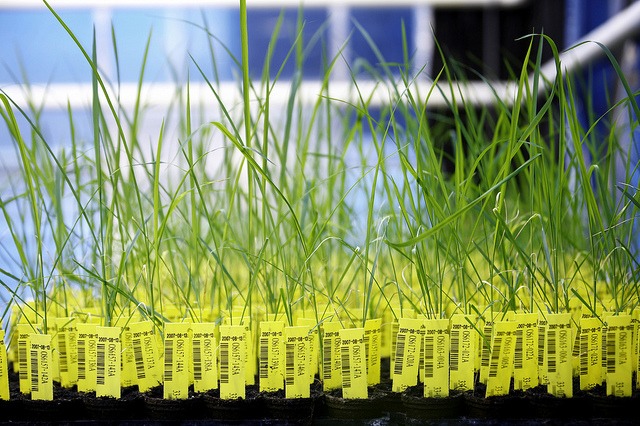
GM/Biotech Crops Report – March 2017
2nd March 2017- GM/Biotech Crops Monthly Reports (BELOW) form part of BCPC’s free three-tier Biotech Crops Info service.
- This service also includes a weekly round-up of news from around the globe – see BCPC Newslink GM Crops section.
- Plus – Free access database on over 300 GM/biotech products covering 23 crops in the global market visit BCPC’s GM/Biotech Crops Manual – Register here for free access.
Already registered? Click here
GM/Biotech Crops Monthly Report March 2017
Wheat yield gains!Rothamsted have been given approval to field test their new strain of wheat that promises to exhibit improved photosynthesis efficiency. In the glasshouse it has shown yield increases of 20 – 40% but can it do it under UK climatic conditions or would it be better tested where sunlight is more prolific? More |
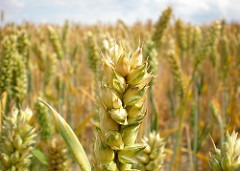 Source: Maria Keays |
|---|---|
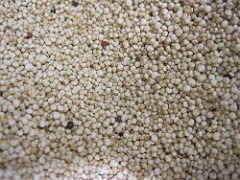 |
Quinoa for all?Quinoa is considered to be a ‘superfood’ and as demand has risen so has the price that we pay for it in the shops because demand has outstripped supply. Now researchers have sequenced the quinoa genome they hope to develop more productive varieties which should help to moderate the price. More |
USDA concludes gene editing is OKThe USDA has updated its GM regulations that were first issued in 1987 and one important conclusion is that some varieties produced by gene editing are equivalent to varieties produced by more traditional methods. More |
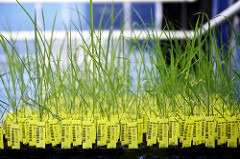 Source: BASF |
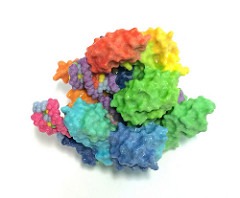 Source: NIH Image Gallery |
CRISPR/Cas9 editing with improved efficiencyThe Chinese Academy of Science has developed a method of CRISPR/Cas9 editing using ribonucleoproteins and it is claimed to have fewer off-target mutations: More |
GM Cotton is good for youA study in Burkina Faso has concluded that GM cotton uses less pesticides, develops higher yields and requires less labour to grow. What’s not to like? More |
 Source: Kimberley Vardeman |
 Source: CAFNR |
There is an app for thatRedox molecules respond to electronic signals and researchers are building them in to gene-edited bacteria so that they can switch specific processes on and off in the modified bacteria using their smart phones! More |
Tomatoes like they used to tasteThe Chinese Academy has been sequencing the genomes of 400 varieties of tomatoes and some of the genes responsible for the taste have been identified. Determining whether these genes are present in modern varieties is the first step to engineering better flavour in commercial varieties. More |
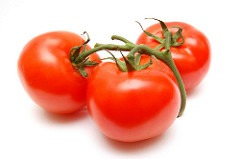 Source: Vladimir Morozov |
|---|---|
 Source: Adrian Scottow |
The rise of the Triffids?Scientists have sequenced the genome of the pitcher plant in an effort to understand the nature of carnivorous plants. Fortunately it seems that there are only a few evolutionary pathways for this trait to develop and it happened around 100 million years ago. More |
TB-resistant cowsScientists in China have successfully used CRIPR/Cas9 editing to insert a Tuberculosis resistance gene (NRAMP1) into a number of cow eggs and have grown these eggs on in cows for a normal pregnancy. The subsequent calves have higher than normal resistance to TB. More |
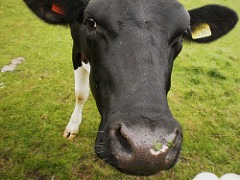 Source: SteveP2008 |
 Source: Miguel Discart |
Who needs statins?Many people these days take statins to reduce cholesterol in their blood and thus reduce the risk of heart disease. However AstraZeneca have noted that a number of people have a natural mutation that causes them to have low cholesterol levels in their blood and have developed an injection that copies the effect of this mutation without the side effects that statins cause in some users. It seems to work on mice and the next step is for human trials. More |
First it was mosquitoesThe release of mosquitoes whose genome has been changed to ensure that they only produce male offspring has formed an effective method of population control used against the vector of zika virus and has also been used to control some lepidopteran pests. Now the New Zealanders have gone one step further and engineered mice that only produce male offspring. These have been released on some off-shore islands where there is a high rate of predation on birds eggs by the indigenous mice. As the released mice interbreed with the locals the mice population will crash. I hope there are no owls or other predators that are relying on the mice for their next meal. |
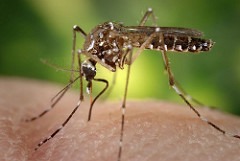 Source: Sanofi Pasteur |
 Source: Pierre Lavallee |
RNAi technology fights mothsA team at the Inner Mongolia University have developed an effective treatment to reduce the damage caused by moths attacking maize crops using RNAi technology. The technique silences chitinase genes in the gut of the larvae when eaten as part of their diet. Presumably you spray the crop with the engineered bacteria and, a bit like Bt genes, when the foliage is eaten it affects the pest. More |
CRISPR/Cas9 is under patent protectionThe patent for CRISPR/Cas9 editing has been awarded to MIT and the Broad Institute of Harvard but many edits are now being achieved by modified methods such as the CRISPR – Cpf1 technique that was recently used to affect changes in the composition of soybean oil. More |
 Source: NIH Image Gallery |
The latest additions to the GM/Biotech Crops Manual database are:
- MON87419 – maize with glufosinate and dicamba tolerance – now approved for food and feed use in South Korea.
- FG72 x A5547-127 – soybean with glyphosate, glufosinate and ALS herbicide tolerance approved for food and feed use in South Korea.
- New stacked event – 73496 x RF3 – oilseed rape (canola) with glyphosate and glufosinate tolerance and restored fertility approved for food use in South Korea.
- New stacked event – Bt11 x MIR162 x MON89034 x GA21 – maize with glyphosate and glufosinate tolerance, lepidopteran insect resistance and mannose metabolism to aid selection approved for food, feed and environmental use in Argentina and for food use in South Korea.
- New stacked event – MON88705 x MON88708 x MON89788 – soybean with glyphosate and dicamba tolerance and with modified oil content approved for food, feed and environmental use in Canada, food use in Japan and food and feed use in South Korea.
- MON88701 x MON 88913 – cotton with glufosinate, glyphosate and dicamba tolerance now approved for food use in South Korea.
- ASR368 – creeping bent grass with glyphosate tolerance – now granted non-regulated status in America.
- New stacked event – MON87751 x MON87701 x MON87708 x MON89788 – soybean with glyphosate and dicamba tolerance and with resistance to Lepidopteran insects now approved for feed use in South Korea.
FOR INSTANT ACCESS TO GM BIOTECH MANUAL CLICK HERE (Registration required)
Already Registered? Click here to access

